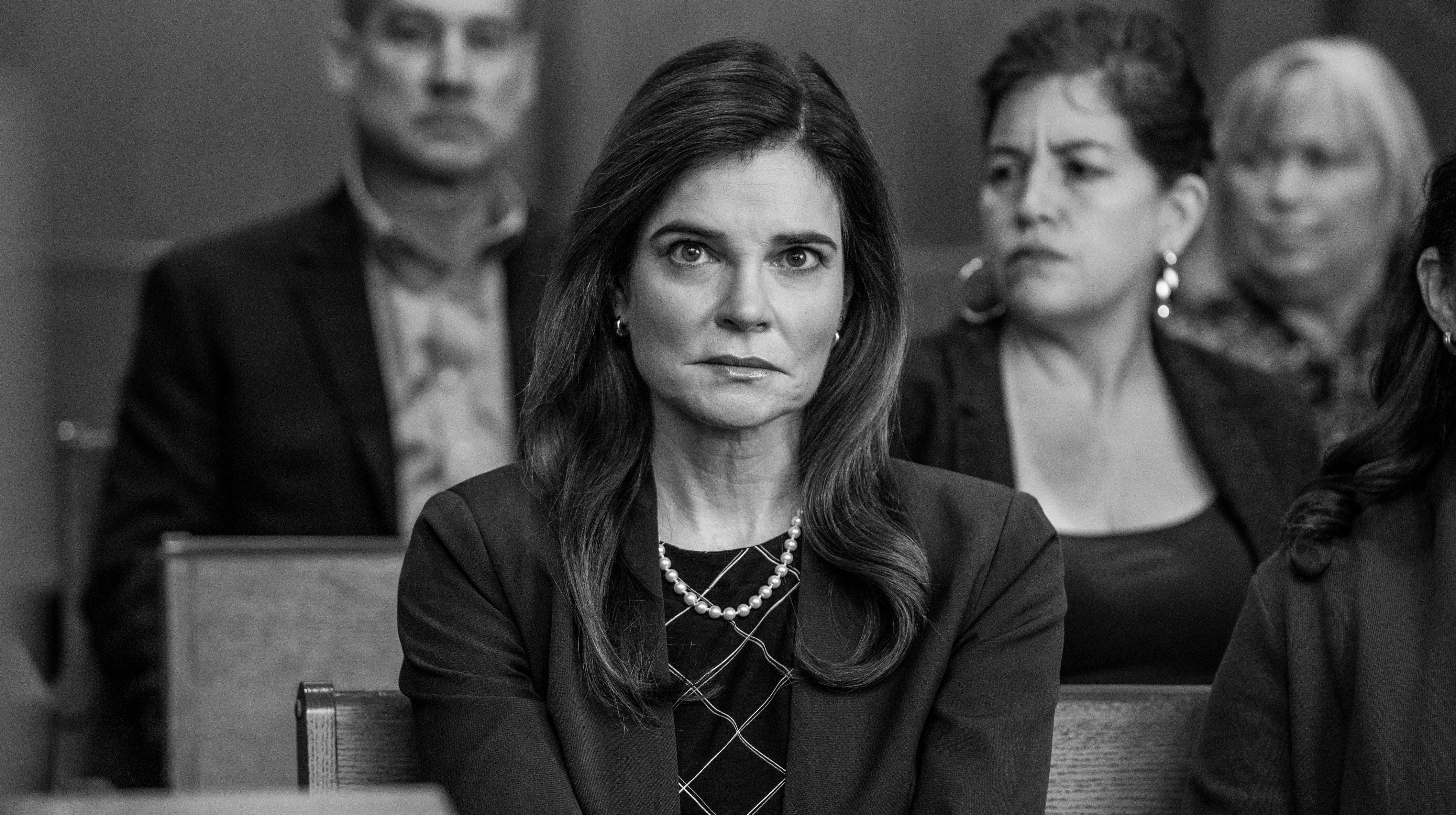Betsy Brandt as Marie Schrader in Better Call Saul’s series finale Photo: Greg Lewis/AMC/Sony Pictures Television
Better Call Saul never shied away from bringing in characters from its predecessor. In its very first episode, the show saw the return of Tuco Salamanca and then went on to host drop-ins from the likes of Hank and Gomie, Gale, Huell, Lydia, Wendy, and many others from Breaking Bad. It saved the best blasts from the pasts for last, however, with a monumental series finale that treated audiences to more throwbacks than they probably anticipated—namely, key scenes with Walt, Chuck, and Marie.
But let’s start a little earlier in the last season. The much-publicized return of Walt and his on-again, off-again partner Jesse was always going to be held to impossible standards. You just can’t go back to iconic characters like that after so many years, with all of their baggage, and pretend you’d never left them behind. The consequence of this was that, in moments, the return of the duo in the episode “Breaking Bad” bordered on caricature.
Which is not to say that it was bad. And there is something equally funny and endearing about watching Aaron Paul, now 42, play Jesse Pinkman. It just wasn’t exactly a blazing send off to these characters. But it didn’t need to be. This was a story, of course, about Jimmy McGill.
That said, even with all the spectacle and nostalgia that came with it, the scene that the trio shared, back in the RV, was more than just fan service. It wasn’t about advancing the plot so much as drawing attention to the parallel that Gene was also getting in too deep, just like Saul did. And just like before, it wasn’t going to end well. This moment, as well as the next episode’s exchange between Kim and Jesse, and especially Saul and Walt’s time-travel “debate” in the finale were all fine, although they all could have used a touch more subtlety.
The reappearance of Chuck McGill, in the final minutes of the final season, was different. During the past three seasons of Better Call Saul, thanks to Michael McKean’s titanic portrayal of the character, Chuck has always been conspicuous through his absence. As the show reached its midpoint, Chuck’s continual withering criticism of Jimmy, his astounding collapse in court, and, of course, his rendition of ABBA’s “The Winner Takes It All” cemented him as perhaps the show’s defining supporting character.
Yet, while it was undoubtedly moving to see him again, his presence was felt in the finale long before his cameo. The moment when Saul finally admitted to having guilt about his brother’s death and the lingering shot of the electric exit sign (a callback to season three’s “Chicanery”) would have been perfect on its own. Even before the return of Michael McKean, Chuck was already in the room.
None of this can be said for the return of Marie Schrader. Where do you even begin with this fiercely loyal, purple-clad kleptomaniac who was always sincere, loving, and, yes, flawed. Throughout Breaking Bad, Betsy Brandt’s performance could be genuinely scene-stealing though criminally underrated. While she was never the main event in a TV series about cartels, cops, and Nazis, Marie was always on the sidelines, ensuring that the show was tethered to a “normal life” reality.
That moment, as Saul (and he is, at that point, Saul Goodman) is being escorted down the corridor, when we catch a glimpse of Mrs. Schrader looking back, was as close as you can get to a genuinely gasp-worthy reveal: Jaws, undoubtedly, dropped.
Marie was the last person that anyone expected to see. Assuming that Saul would end up in a court was a decent bet, but we were still thrown. And Betsy Brandt slipped straight back into the role, as if it were still 2013, seamlessly picking the character up from exactly where she’d been left off. She was still raw, still vulnerable, and still filled with seething anger. This was never more evident than in her incredulity at the final con that Saul was going to try and pull and in her crushing disappointment at the fact that he was going to get a deal (a measly seven-year sentence). In a final sucker punch, Peter Gould also revealed that Marie isn’t wearing purple. Like Saul’s life in the aftermath of his involvement with Walter White, her own world had been sapped of color. Now, she wears black.
But above all, Marie’s appearance helps us remember exactly why Saul was there, in court, and the devastation that he helped bring about. It’s all too easy to forget that this charismatic character, who the audience has come to sympathize with over the past six seasons, has done some of the worst things imaginable. He couldn’t just get away with it; he didn’t deserve a happy ending. As he admitted himself, Walt would have taken a bullet to the head or would be behind bars without his help, and Hank (along with many others) would never have been murdered.
And it had to be Marie. Because, ultimately, she had suffered the most, had the most ripped away from her: She lost her relationship with her sister, and the most important person in her life was killed and left to rot in a ditch in the desert. With this reminder, the audience can see that Jimmy/Saul/Gene finally owning up to his actions was the bravest thing he could do. Marie’s cameo facilitated that and, at last, we could cheer for Saul Goodman and not feel guilty about it.









































